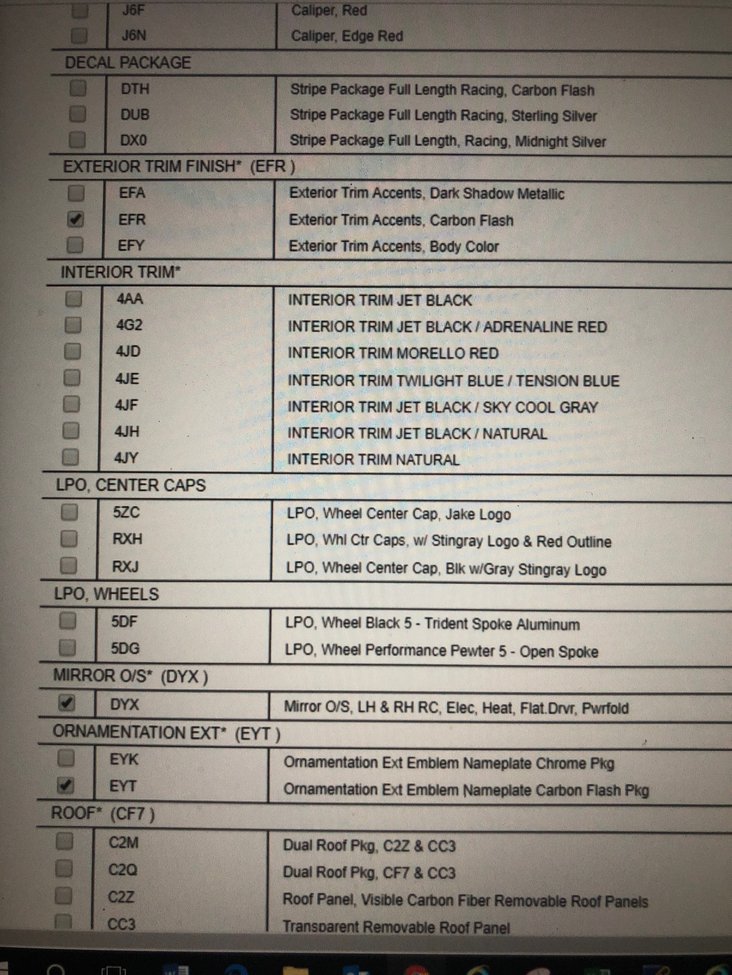A car’s transmission speed sensor, sometimes called a vehicle speed sensor (VSS), works out how quickly it’s moving along the road. When you look down at your car’s speedometer, the figure you see is communicated from this little component. Your vehicle depends on the transmission speed sensor to function correctly. If left unchecked, a faulty sensor can trigger a range of symptoms, which can have a significant impact on your ability to drive safely.
Because this sensor is so important to your vehicle, it’s crucial to know the signs that something’s amiss. Below, we run some common symptoms of a bad transmission speed sensor, what they mean, and how these sensors work in your car.
Mercedes-Benz models where 722.9 7-speed transmission is used. The 7G NAG2 transmission was initially installed on many models that had the M272 and M273 transmission. It was later installed in all models including 4matics, diesel, and rear wheel drive models. In 2014 the 9-speed automatic transmission replaced the 722.9. Generally speaking, the more gears in a transmission, the better it can optimize engine speed in a variety of driving conditions. That means low gears can provide better acceleration while higher.
The Kona N will come with an eight-speed dual-clutch automatic transmission, just like the Veloster N’s optional eight-speed dual-clutch automatic. (A six-speed manual is standard in the. The last option was the Tremec Magnum six-speed, which is an excellent, smooth-shifting trans, but it's big and nearly always requires major transmission tunnel work. See all 5 photos. A good transmission speed sensor is essential to getting peak performance from your ride. While it is a physically smaller part, it plays a sizeable role in calculating torque and ensuring proper gear shifting. Failure of this component must be specifically identified, and typically begins with a driver becoming aware of a rougher feel when.
What is a Transmission Speed Sensor?
A car’s transmission speed sensor is responsible for working out how fast the vehicle is travelling, and communicating this information to the engine control unit (ECU) – the ‘brain’ of the car. When the ECU in an automatic car receives this information, it is able to select the optimal gear for efficient driving at that speed. In both automatic and manual cars, the sensor helps to determine ignition timing and fuel injection, improving the car’s efficiency, controlling emissions, and improving drivability. The transmission speed sensor is also a vital component in electronic speedometers. It is located either on the transmission output shaft, or the crankshaft, and cars tend to have two of them, so their data can be corroborated.
The sensors function through a surprisingly simple mechanism. Each consists of three main components: a toothed metal disk, a detector, and a magnetic coil. The disc spins in time with the shaft it’s connected to, and as the teeth move past the magnetic coil, they interrupt the field it produces. This results in a series of magnetic pulses, rather than a continuous field. These pulses are fed into the car’s onboard computer, where their frequency is used to work out the speed of the car. The higher the pulse frequency, the faster the vehicle is travelling. A final speed reading is then communicated to a display on the dashboard, which can either be digital or analogue.

A car’s transmission speed sensor also allows the vehicle to keep track of the distance it has travelled: for every 40,000 magnetic pulses, the odometer reading increases by one mile.
What Can Go Wrong?
A transmission speed sensor can malfunction for a variety of reasons:
- Corrosion of the component
- Loose or disconnected wires
- Cracks in the housing of the sensor
- Sensors flying off of their shaft entirely
- A poor connection between the sensor and the ECU
- A damaged magnetic coil
Whatever it it that goes wrong, the symptoms are likely to be the same.
Symptoms to Watch Out For
If your car’s transmission speed sensor malfunctions or fails, you can expect to experience one or more of the following symptoms:
Transmission Speed Sensor Price
- Faulty Cruise Control

If your car is equipped with cruise control, this functionality is usually one of the first things to suffer when a transmission speed sensor malfunctions. Without a properly functioning sensor, the ECU isn’t receiving information about the car’s speed. This makes it impossible for the vehicle to maintain a constant velocity. Without reliable speed information, the ECU will automatically prevent you from using cruise control until the problem is fixed. If you suspect your car has a faulty sensor, attempting to use cruise control can actually be a useful diagnostic method.
- Sluggish Shifting
When a transmission speed sensor malfunctions or fails, you’ll notice longer shifting intervals than you’re used to. This is because a car’s transmission depends upon information relayed by the ECU, which, in turn, depends on speed data from the sensors. If this speed data isn’t reliably conveyed, the ECU struggles to properly manage gear changes. All this results in a small but noticeable waiting period between shifts.
- Difficult Shifting
Even in a manual vehicle, a bad transmission speed sensor can cause gear shifting problems. Just moving the stick can be more difficult, and you may notice that the shaft feels rougher, or faster than usual when you shift. If you experience this symptom, consult a trusted mechanic or your dealership as soon as possible – smooth gear changes are vital for safe driving.
- Malfunctioning Speedometer
As mentioned earlier, most modern cars are fitted with an electronic speedometer, which depends on a transmission speed sensor to function. If your speedometer is erratic, or doesn’t work at all, it could be because the dial or screen is not receiving consistent speed information from the transmission speed sensor.
- Illuminated Check Engine Light
The check engine light is something of a catch-all when it comes to car trouble, but if it illuminates in conjunction with another symptom on this list, there’s a good chance it has been triggered by a bad transmission speed sensor. When a sensor malfunctions or fails, the ECU will notice that it’s not receiving the speed data it should. In response, the check engine light is switched on.
Transmission Speed Shop

Diagnosis
If you notice one or more of these symptoms, it’s important to take your car to a trusted mechanic as soon as possible. A bad transmission speed sensor makes for rough and difficult gear changes, and can leave you without an accurate speedometer. All this adds up to a dangerous drive, worsened by the fact that your car is probably less efficient, and producing more harmful emissions.
Luckily, it’s fairly straightforward to diagnose a faulty transmission speed sensor. Your mechanic will plug in an electronic diagnostic tool to the car’s onboard computer, which will display a certain error code if the sensor is indeed at fault.
Repair Cost
Crucial as they are, you might expect a transmission speed sensor to be an expensive part. However, the opposite is actually true.
Costs will vary depending on the make and model of your vehicle, but you can expect to spend between $20 and $50 on your new component, plus about $50 to $100 on labor.
If you’re a dab hand at auto DIY, however, you could consider replacing the sensor yourself. If this sounds feasible to you, we’d recommend this guide.
Sources:
- Vehicle Speed Sensors: Types of VSS – AZO
- Symptoms of a Bad or Failing Transmission Speed Sensor – Your Mechanic
MORE TO READ
— Ford F-150 10-speed transmission problems have caused a lawsuit which alleges truck occupants can suffer whiplash because of how hard and erratically the the transmissions shift.
The Ford F-150 10-speed transmission class action lawsuit includes any consumer in Pennsylvania who formerly or currently owns or leases a 2017-2020 Ford F-150 truck equipped with a 10R80 10-speed automatic transmission.
The Ford F-150 owner who sued says he purchased a 2018 F-150 SuperCab in September 2018 when the truck had 10 miles on the odometer. The plaintiff says by 6,000 miles the F-150 was making a loud clanking noise from the 10-speed transmission, causing rough shifting and shift times much too long.
The lawsuit alleges the transmission caused the F-150 to decelerate and created safety hazards while driving.
The truck was brought to a Ford dealer where technicians were allegedly told about the problems with the 10-speed transmission. The plaintiff says the truck should have been repaired under warranty, but technicians allegedly said there was no fix because all F-150 trucks with 10-speed transmissions made the same noise.
In addition, the plaintiff claims he was told the alleged slipping and jerking was normal for 10R80 transmissions.
The plaintiff claims Ford knew or should have known about the alleged transmission problems that cause hard shifting, jerking, lunging and hesitation between gears.
The class action makes reference to a 2019 Ford recall of about 1.5 million 2011-2013 F-150 trucks equipped with 6-speed automatic transmissions. The recall was issued because the trucks could suddenly downshift into first gear, a problem blamed on a loss of signal from the transmission output speed sensor to the powertrain control module.
According to the lawsuit, the 2017-2020 F-150s are infected with the same defects which Ford allegedly refuses to acknowledge.
The class action also alleges Ford issued at least two technical service bulletins (TSBs) concerning transmissions with harsh shifting. The TSBs said 2017-2018 F-150 trucks 'may exhibit harsh/bumpy upshift, downshift and/or engagement concems.'
According to the bulletins:
The trucks were 'equipped with an adaptive transmission shift strategy which allows the vehicle's computer to learn the transmission's unique parameters and improve shift quality. When the adaptive strategy is reset, the computer will begin a re-learning process. This re-learning process may result in firmer than normal upshifts and downshifts for several days.'
Dealerships were told to reprogram the powertrain control modules.
According to the lawsuit, Ford has not recalled the vehicles to repair the 10-speed transmissions and hasn't offered to reimburse owners and lessees who paid money for related transmission problems.
The plaintiff says Ford should pay damages to all affected customers and order a recall to repair the alleged 10-speed transmission defects.
The Ford F-150 10-speed transmission class action lawsuit was filed in the U.S. District Court for the Eastern District of Pennsylvania: Orndorff, et al., v. Ford Motor Company.
The plaintiff is represented by Greg Coleman Law, the Carlson Law Firm, and Brent Coon & Associates.
CarComplaints.com has complaints from owners of Ford F-150 trucks.
